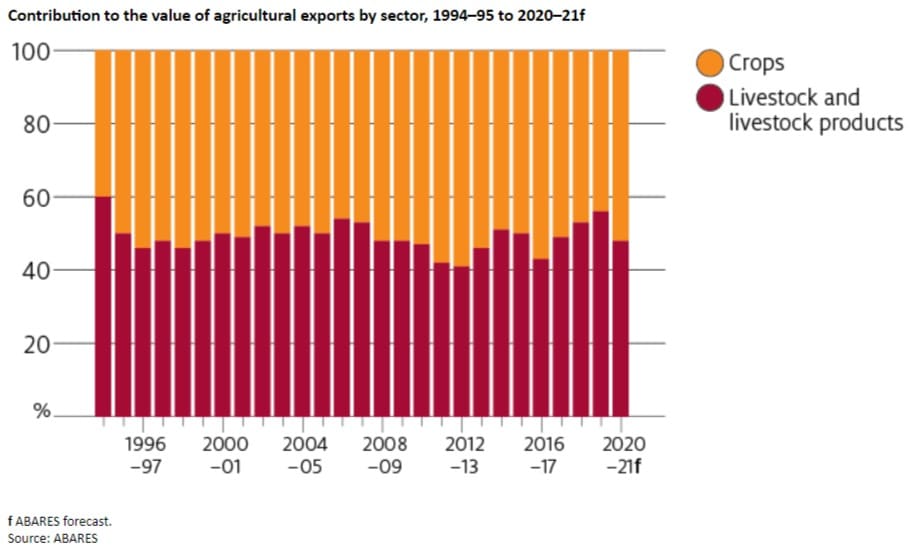HIGHER Australian crop production is expected to help cropping products take over from livestock in export volumes in 2020-21, according to ABARES’ December quarter 2020 Agriculture Commodities report.
The report said the gross value of Australian farmgate production is expected to lift 7 percent to $65 billion in 2020-21 on the back of the nation’s second largest winter crop and promising rainfall outlook.
The report said higher grain production will flow through to agricultural exports, although the overall value of exports is still forecast to fall by 7pc year-on-year to $44.7 billion.
“This is because recovery from drought is limiting production and exports of livestock products and fibres.
“Prices for crops are falling back to world parity levels, and these remain low following several years of record world production,” the report said. COVID-19 containment measures have had a limited impact on agricultural markets due to consumers switching from restaurants to home consumption.

The report said that in most years of the last the decades, the cropping sector (including horticulture) contributed far more to the value of domestic agricultural production than the livestock sector. However, both sectors generally contributed equally to exports because most horticultural products — worth over $12 billion annually — are consumed in Australia.
The report said destocking during the drought temporarily shifted this balance.
“Increased livestock turn-off from drought-affected regions increased the export share of livestock products to 56pc — a 25-year high.”
The livestock turn-off started in 2017-18 as dry conditions gradually became worse after 2016-17 and African Swine Fever took off in China, and livestock’s share in export value increased, peaking in 2019-20, but expected to decline in 2020-21.
“More favourable seasonal conditions have led to herd and flock rebuilding and the composition of exports is shifting back to crops, for which prices are falling back to export parity levels (which are historically low), resulting in a steep decline in export earnings,” the report said.
ABARES executive director Dr Steve Hatfield-Dodds said overall, Australian agricultural production is bouncing back from the drought.
“We’re expecting a near all-time high winter crop, the best ever in New South Wales, and a more favourable outlook for summer cropping than we have seen in recent years.
“Livestock prices have also stayed high with herd and flock rebuilding, and continued international demand.”
Dr Hatfield-Dodds said exports have continued to find markets during the pandemic, but the residual effect of past dry seasons and trade uncertainties are pushing down export value.
“Recovery from drought is limiting production and exports of livestock products and fibres, with meat prices also falling as the African Swine Fever impact on China’s pork production begins to lessen.
“There are a number of risks present for the rest of 2021 that remain a watch point, including wine trade with China and labour shortages for the horticulture sector.”
Click here to read the full ABARES report.

HAVE YOUR SAY